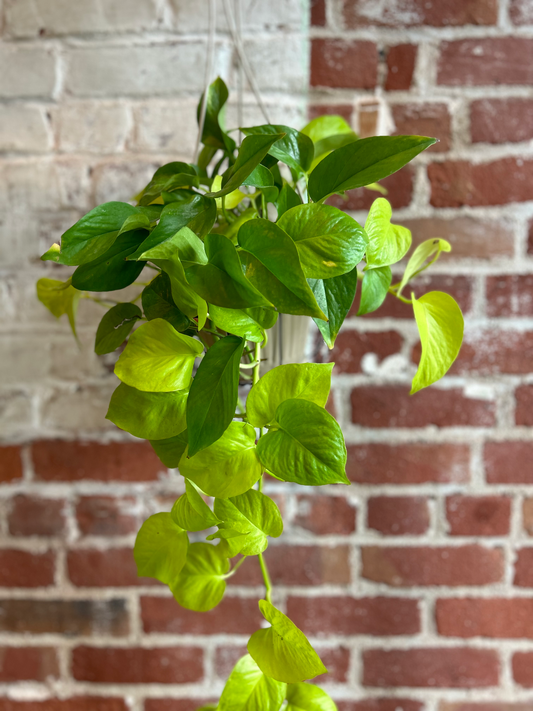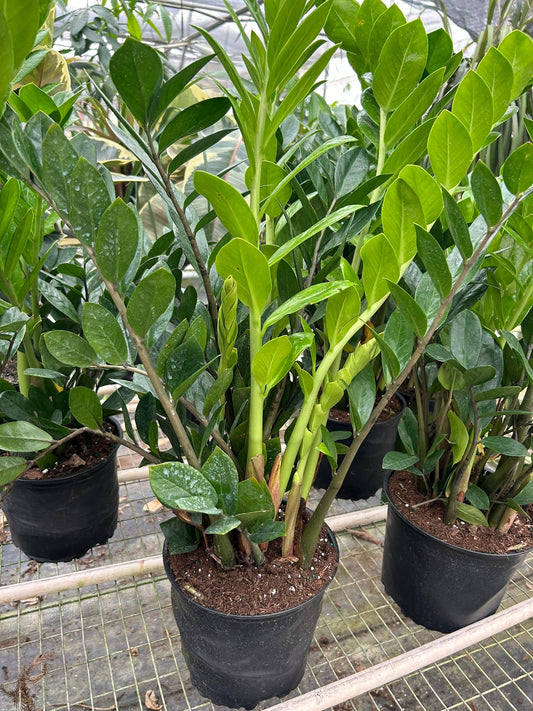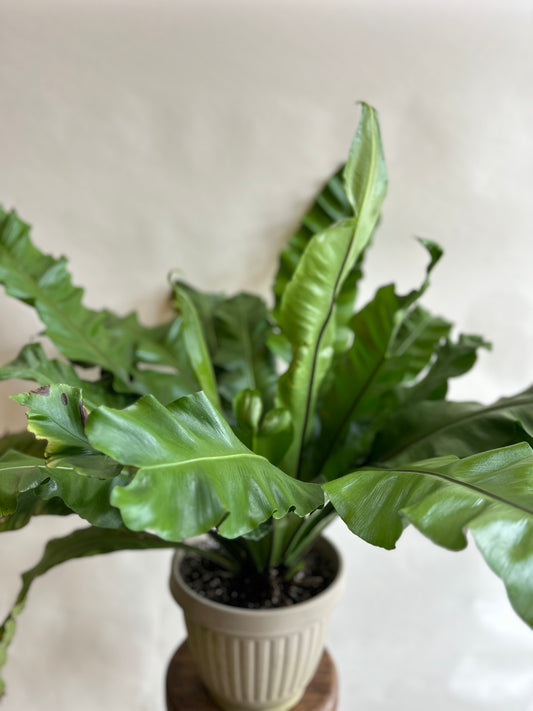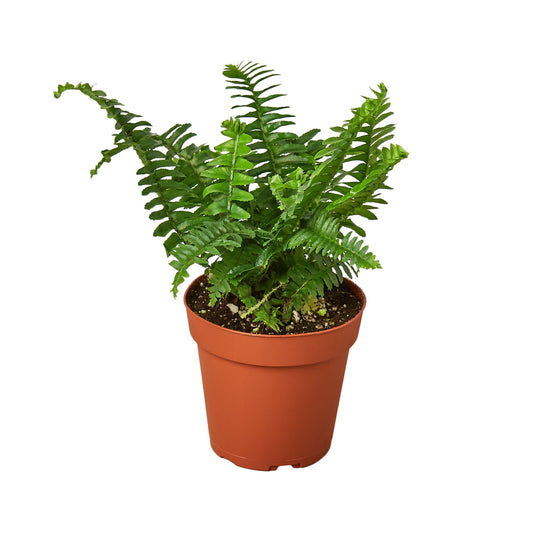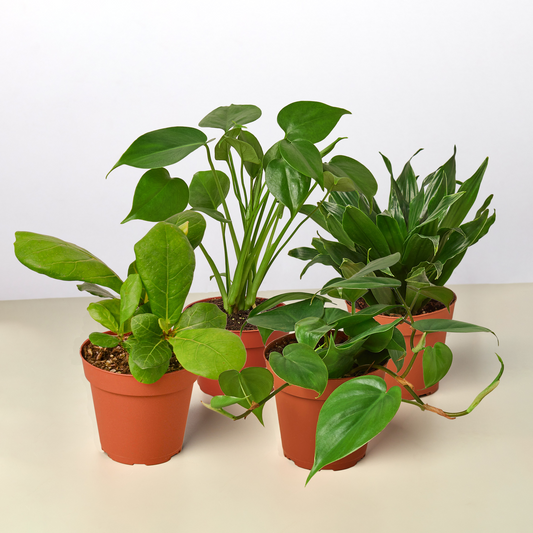Are Hawaiian Spider Plants Toxic to Cats?
Cafe Planta Team
Hawaiian Spider Plants are popular houseplants that grace many homes with their cascading green and white leaves. They're often praised for their easy care and air-purifying qualities. However, if you're a cat owner, you might find yourself wondering, "Are Hawaiian Spider Plants toxic to cats?" This question is crucial for any pet parent who wants to ensure the safety of their feline friends while maintaining a lively indoor garden.
In this article, we'll explore the relationship between Hawaiian Spider Plants and our beloved cats. We'll cover everything from the plant's characteristics to the potential effects on cats and offer some practical tips for keeping your home both pet-friendly and plant-filled. So, let's get into it and help you make informed decisions about your indoor jungle!
What Exactly is a Hawaiian Spider Plant?
Before we jump into the nitty-gritty of plant toxicity, let's chat about what makes a Hawaiian Spider Plant special. These plants are a variety of the more commonly known Spider Plant (Chlorophytum comosum), which is famous for its long, arching leaves and spider-like plantlets. The Hawaiian variety typically boasts thicker leaves and a more compact growth habit, making it a stunning addition to any home.
Spider plants are adored for their resilience and ability to thrive in various conditions. They're not particularly fussy about light and can tolerate everything from bright, indirect light to partial shade. Plus, they're not too demanding when it comes to watering. They prefer their soil to dry out a bit between waterings, which means you're less likely to drown them with love.
Another appealing trait of the Hawaiian Spider Plant is its air-purifying capabilities. These plants can remove toxins such as formaldehyde and xylene from the air, making your home environment healthier. No wonder they're a favorite among houseplant lovers!
Understanding Plant Toxicity in Cats
When it comes to plant toxicity, it's essential to remember that cats are natural explorers. They're curious creatures who love to nibble on plants, sometimes out of boredom, curiosity, or a simple desire to munch on greens. This natural behavior is why knowing which plants are safe and which are not is critical.
Plant toxicity in cats can range from mild to severe, depending on the plant and the amount ingested. Symptoms of plant poisoning can include drooling, vomiting, diarrhea, lethargy, and in severe cases, more serious reactions. It's always a good idea to be aware of the plants you have in your home and how they may affect your feline friends.
Some plants contain compounds that are toxic to cats, causing various health issues. Even plants that are safe for humans can sometimes be hazardous for our furry companions. Therefore, it's important to research any new plant addition to your home, especially if you have pets.
The Safety of Hawaiian Spider Plants for Cats
Now, let's address the burning question: Are Hawaiian Spider Plants toxic to cats? The good news is that these plants are considered non-toxic to cats. According to the ASPCA, Spider Plants, including the Hawaiian variety, are not listed as toxic to cats or dogs. This means that if your curious kitty decides to take a little nibble, they're unlikely to suffer any serious harm.
However, there's a slight caveat. While Hawaiian Spider Plants are not toxic, they do contain compounds that can have a mild hallucinogenic effect on cats. This reaction is similar to what some cats experience with catnip. So, if your feline friend munches on the leaves, they might become a bit more playful or mischievous than usual.
It's also worth noting that, while the plant itself isn't harmful, overeating any plant material can lead to digestive upset in cats. So, it's always a good idea to monitor your cat's interaction with houseplants and ensure they don't go overboard with their snacking habits.
Why Do Cats Love Spider Plants?
If you've noticed your cat paying particular attention to your Hawaiian Spider Plant, you're not alone. Many cat owners report that their feline friends seem strangely attracted to these plants. But why?
One reason cats might be drawn to Spider Plants is their intriguing texture and appearance. The long, arching leaves can be particularly tempting for cats who love to play with anything that dangles or moves. It's almost like a built-in cat toy!
Another reason could be the mild hallucinogenic properties that Spider Plants possess. While not harmful, these compounds might give cats a slight "high," similar to the effects of catnip. This can make the plant even more appealing to your four-legged friend.
Additionally, cats might simply enjoy the taste or texture of the plant. Like humans, cats have individual preferences, and some might find the Spider Plant's leaves particularly enticing. While it's generally harmless, it's a good idea to keep an eye on your cat's interactions with the plant.
Keeping Your Home Safe for Both Plants and Cats
Balancing a love for houseplants with the safety of your pets can sometimes feel like walking a tightrope. But fear not! There are plenty of ways to ensure your home is a safe and harmonious space for both your plants and your cats.
- Placement: Consider where you place your plants. If your cat is particularly drawn to the Hawaiian Spider Plant, you might want to position it out of reach. Hanging planters or shelves can help keep plants away from curious paws.
- Distraction: Provide your cat with plenty of toys and activities to distract them from the plants. A well-stimulated cat is less likely to turn to your greenery for entertainment.
- Training: With a little patience, you can train your cat to avoid certain areas or objects. Using deterrents like citrus sprays or double-sided tape around your plants can help teach your cat to steer clear.
- Variety: Consider adding cat-friendly plants to your collection. Cat grass or catnip are great options that your feline friends can nibble on without any worries.
By taking these steps, you can enjoy a beautiful indoor garden while ensuring your cat stays safe and healthy.
Choosing Pet-Friendly Houseplants
If you're a plant lover with pets, it's always a good idea to choose houseplants that are safe for your furry friends. While Hawaiian Spider Plants are non-toxic to cats, many other pet-friendly options can also beautify your home.
Here are a few pet-safe houseplants to consider:
- Bamboo Palm: This low-maintenance plant is safe for both cats and dogs and adds a tropical touch to any room.
- Boston Fern: Known for its lush foliage, this fern is non-toxic to pets and thrives in humid environments.
- Areca Palm: Another tropical beauty, the Areca Palm is pet-safe and great for adding height and drama to your plant collection.
- Calathea: With its stunning patterned leaves, Calathea is safe for pets and adds a pop of color to your space.
- Pepperomia: Compact and easy to care for, Pepperomia plants are non-toxic and come in various shapes and colors.
Choosing pet-safe plants means you can enjoy a lush indoor garden without worrying about your pets' health. Always double-check the safety of any new plant addition, as some may have similar appearances but different toxicity levels.
Understanding Your Cat's Behavior Around Plants
To truly coexist peacefully with your plants and cats, it helps to understand why your feline friend might be drawn to specific plants. Cats are naturally curious creatures, and their interest in plants can stem from various reasons.
Firstly, cats may be attracted to the movement of plant leaves. A gentle breeze or even your cat's paw can make the leaves flutter, sparking their instinct to pounce and play. This is particularly true for plants like the Spider Plant, with their long, dangling leaves.
Secondly, your cat might enjoy the taste or texture of certain plants. While most cats are obligate carnivores, they occasionally nibble on greens for added fiber or simply out of curiosity. This behavior is generally harmless, but overindulgence can lead to digestive upset.
Finally, some cats are drawn to plants with scents or compounds that have a mild intoxicating effect. As mentioned earlier, Spider Plants can have a slight hallucinogenic effect on cats, similar to catnip. This can make them even more appealing to your furry friend.
Understanding these behaviors can help you manage your cat's interactions with plants and ensure a safe environment for both parties.
What to Do If Your Cat Eats a Spider Plant
If you catch your cat nibbling on your Hawaiian Spider Plant, don't panic. Since the plant is non-toxic, your cat is unlikely to suffer any serious harm. However, it's still a good idea to monitor them for any signs of digestive upset or unusual behavior.
Here's what you can do if your cat eats a Spider Plant:
- Monitor: Keep an eye on your cat for any signs of vomiting, diarrhea, or lethargy. These symptoms are usually mild and should pass on their own.
- Limit Access: If your cat seems particularly interested in the plant, consider moving it to a less accessible location.
- Provide Alternatives: Ensure your cat has access to cat grass or catnip to satisfy their nibbling instincts.
- Consult a Vet: If your cat shows signs of severe distress or symptoms persist, it's always best to consult your veterinarian for advice.
By staying calm and taking these steps, you can ensure your cat remains safe and healthy, even if they're a little too curious about your plants.
Creating a Harmonious Home for Cats and Plants
Living with both cats and plants may seem challenging, but it can be a delightful experience with some planning and consideration. By understanding your cat's behavior and choosing pet-friendly plants, you can create a space where both can thrive.
Here are some tips for creating a harmonious home for cats and plants:
- Designate Plant Zones: Create specific areas in your home for plants that your cat can't easily access. This can include high shelves, hanging planters, or enclosed terrariums.
- Engage Your Cat: Spend time playing with your cat and providing plenty of toys and activities to keep them entertained. A happy, engaged cat is less likely to turn to plants for amusement.
- Rotate Toys and Plants: Regularly switch up your cat's toys and plant arrangements to keep things interesting for both you and your cat.
- Educate Yourself: Stay informed about the plants in your home and their potential effects on pets. Knowledge is your best tool for creating a safe environment.
By following these tips, you can enjoy the beauty of houseplants while ensuring your cat remains safe and content.
Final Thoughts
In summary, Hawaiian Spider Plants are a wonderful addition to any plant collection and, thankfully, they're non-toxic to cats. While they might have a mild hallucinogenic effect similar to catnip, they're generally safe for your feline friends. Keep an eye on your cat's interactions with the plant and ensure they don't overindulge, and you should have no trouble maintaining a pet-friendly home.
Here at Cafe Planta, we believe plants have the power to connect us with nature and each other. Whether you're a seasoned plant parent or just starting, we're here to help you create a thriving indoor garden. If you have questions or need advice, feel free to email us or send us a message on Instagram. Happy planting!


